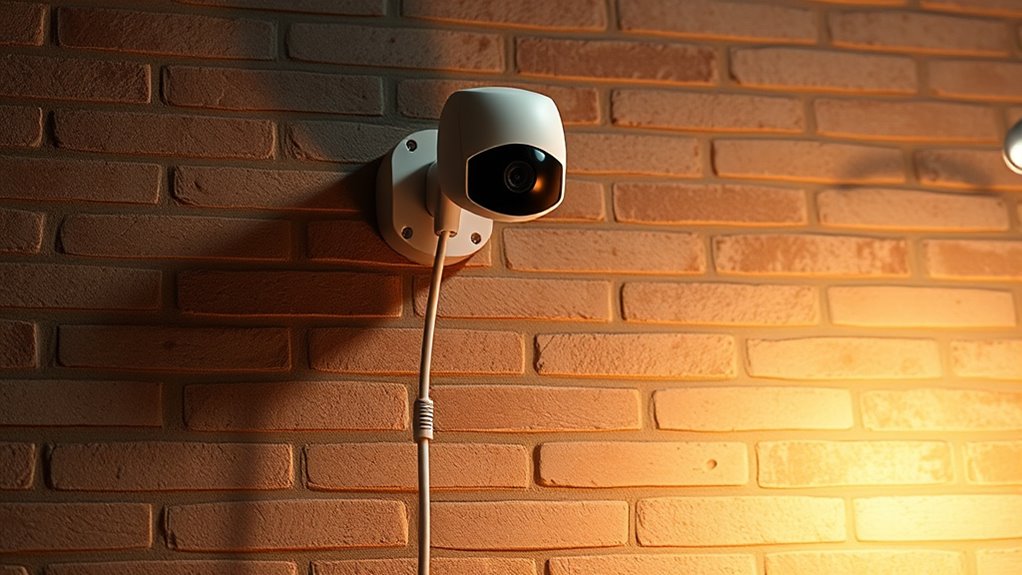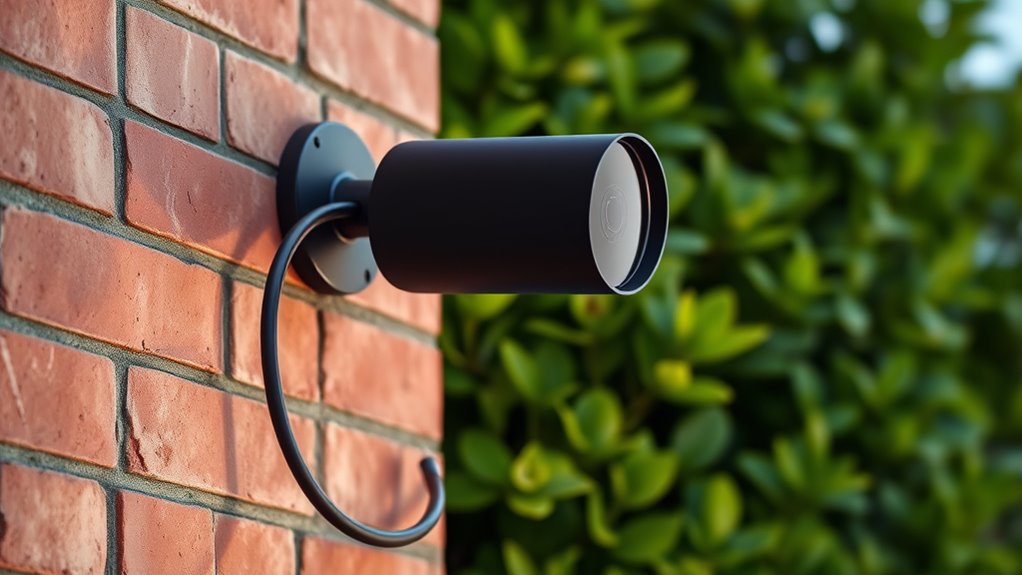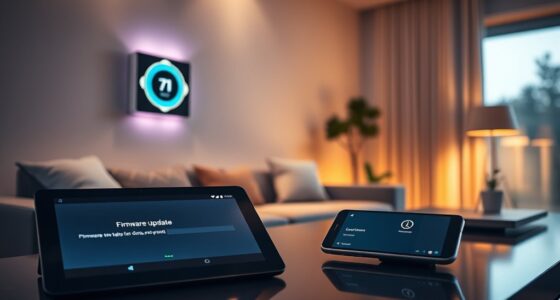Power over Ethernet (PoE) makes installing smart cameras much easier by combining data and power into a single cable. You won’t need separate power outlets or additional wiring, saving time and clutter. PoE also offers reliable power and seamless connectivity, ideal for hard-to-reach locations. To get the most from your camera system, guarantee your network supports the proper PoE standards. Keep exploring to discover how PoE can simplify your setup even further.
Key Takeaways
- PoE simplifies smart camera installation by combining power and data over a single Ethernet cable.
- Compatibility requires using PoE-enabled switches or injectors with sufficient wattage capacity.
- Proper cable management and testing ensure reliable power delivery and data transfer to cameras.
- PoE reduces clutter and eliminates the need for separate power outlets near cameras.
- Securing PoE devices with VLANs and physical placement enhances network security for smart cameras.

Have you ever wondered how network devices like cameras and phones are powered without needing separate power cords? The answer lies in Power over Ethernet (PoE), a technology that allows you to transmit both data and electrical power through a single Ethernet cable. This innovation simplifies installations, reduces clutter, and saves costs. But, to harness its full potential, understanding network security and adhering to proper installation guidelines is essential.
PoE works by injecting power into standard Ethernet cables, which are connected to compatible devices like smart cameras, VoIP phones, and wireless access points. Since these devices rely on the same cable for connectivity and power, you eliminate the need for additional power outlets or messy wiring. This streamlined setup not only makes installations faster but also more flexible, especially in locations where power sources are sparse or hard to reach.
When planning your PoE deployment, following installation guidelines is critical. Start by assessing your network’s power requirements and selecting the right PoE switch or injector that provides sufficient wattage for your devices. Make sure the Ethernet cables you use are rated for PoE, typically Cat5e or higher, to ensure safety and performance. Proper cable management is also vital—avoid sharp bends and interference sources to maintain signal integrity. Additionally, ensure your network infrastructure is designed to support PoE, with adequate power budgets and network segmentation to prevent overloads. Always test connections thoroughly after installation to verify both data transfer and power delivery, minimizing future troubleshooting.
Network security plays a crucial role in PoE deployments. Since these devices often operate in accessible locations, they can be vulnerable to unauthorized access if not properly secured. Implementing strong network security measures, such as VLAN segmentation, access controls, and secure firmware updates, helps protect your devices from cyber threats. It’s also wise to keep your PoE switches updated with the latest security patches and to disable unused ports to prevent unauthorized connections. When installing smart cameras or other PoE-powered devices, ensure they are physically secured to prevent tampering. Proper network segmentation isolates critical devices from general access networks, reducing the risk of breaches. Additionally, understanding power consumption insights can help in planning energy-efficient deployments that minimize costs and environmental impact.
Frequently Asked Questions
Can POE Supply Power to Outdoor Smart Cameras?
Yes, PoE can supply power to outdoor smart cameras, offering wireless flexibility without needing separate power sources. You can install cameras in remote or difficult-to-reach areas easily, thanks to its streamlined setup. Additionally, PoE helps with power management by delivering consistent power and data over a single cable, reducing clutter and improving reliability. This makes PoE an efficient solution for maintaining outdoor smart cameras securely and conveniently.
What Are the Limitations of POE for High-Power Devices?
When considering Poe for high-power devices, you should be aware of power limitations that can restrict performance. Not all devices are compatible with higher wattage standards like PoE+ or PoE++, so you need to check device compatibility carefully. Using Poe for high-power devices might require specialized switches or injectors to guarantee sufficient power delivery without risking overloads or damage. Always verify your device’s power needs before deployment.
How Does POE Impact Network Security?
Power over Ethernet can impact your network security by requiring you to implement strong access control and network encryption. Since PoE devices connect directly to your network, unauthorized access becomes a risk if you don’t secure the connections properly. You should use encrypted channels and strict access controls to prevent potential breaches, ensuring your smart cameras and other devices remain protected from cyber threats.
Are There Compatibility Issues With Existing Network Infrastructure?
Think of your network as a finely tuned orchestra, where compatibility issues can cause discord. You might encounter challenges with network compatibility and device interoperability if your existing infrastructure isn’t aligned with new PoE devices. Older switches or routers may not support PoE standards, leading to integration hiccups. To guarantee seamless performance, verify that your network hardware is compatible and can harmonize with new smart cameras and PoE technology.
What Are the Cost Differences Between POE and Traditional Wiring?
You’ll find that the cost comparison between PoE and traditional wiring often favors PoE due to its wiring simplicity. With PoE, you only need one cable for power and data, reducing installation time and materials. This can lower overall costs, especially in large setups. While initial equipment costs might be higher, the ease of setup and fewer cables make PoE a cost-effective choice in the long run.
Conclusion
Power over Ethernet simplifies your setup by combining power and data into a single cable, making your smart cameras easier to install and manage. Did you know that PoE reduces installation costs by up to 50% compared to traditional wiring? With this technology, you get reliable power and seamless connectivity all in one, giving you peace of mind and smarter security. Embrace PoE today and experience the future of efficient, hassle-free camera setups.









